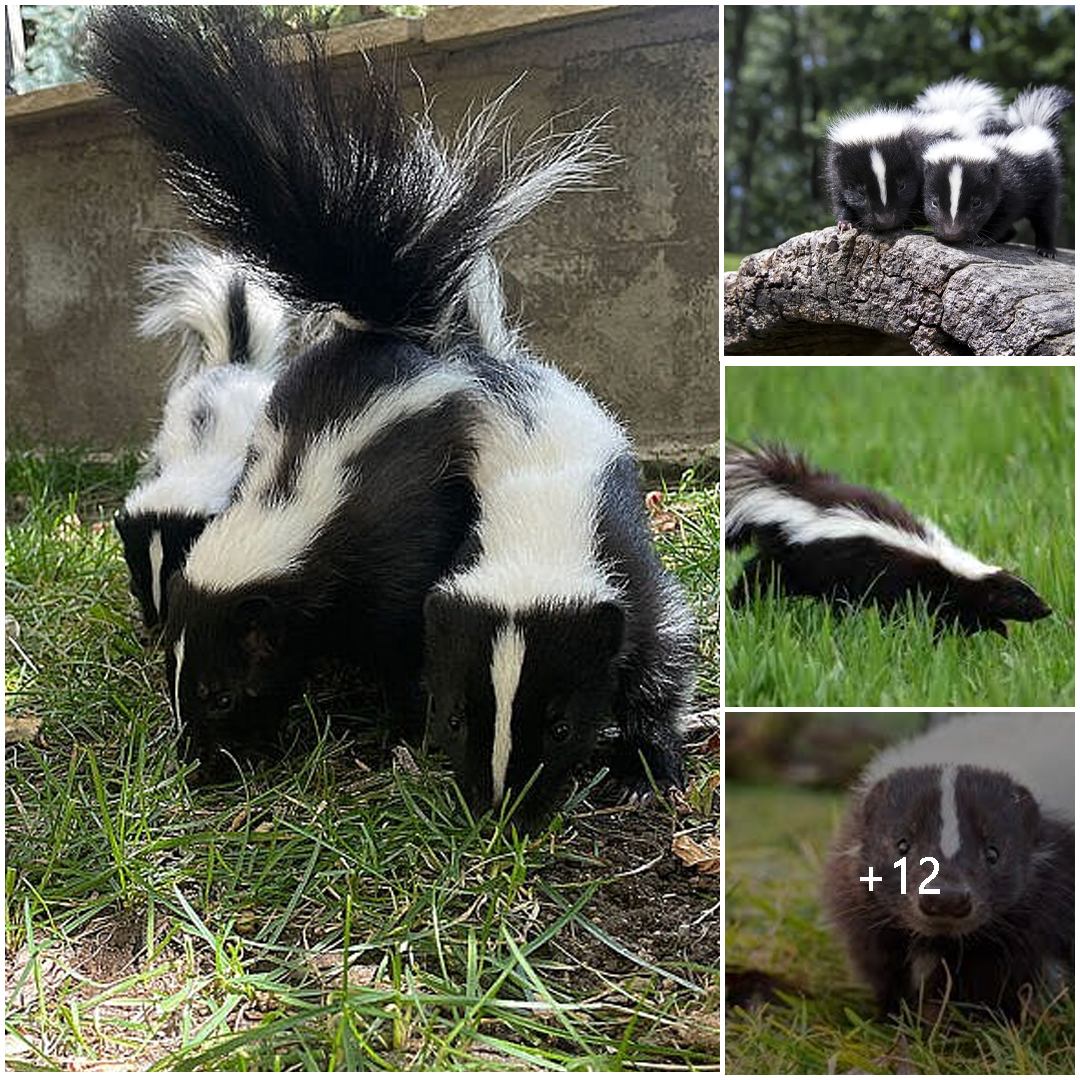
Skunk: The Striped and Pungent Mammal
Introduction: Skunks are notorious mammals known for their distinctive black and white fur patterns and their ability to release a strong-smelling spray as a defense mechanism. Despite their reputation for their odoriferous defense mechanism, skunks play important roles in ecosystems as efficient hunters of insects and small rodents.
Physical Characteristics: Skunks belong to the family Mephitidae and are recognized by their characteristic black fur with white stripes or spots. They have stocky bodies, short legs, and bushy tails. Skunks possess powerful scent glands near the base of their tails, which they can discharge as a foul-smelling spray when threatened.
Habitat and Distribution: Skunks are native to the Americas, ranging from Canada to South America. They inhabit a variety of habitats, including forests, grasslands, deserts, and urban areas. Skunks are adaptable animals and can thrive in diverse environments as long as they have access to suitable shelter and food sources.
Behavior and Diet: Skunks are primarily nocturnal animals, preferring to forage for food at night. They are omnivores with a diet that includes insects, small mammals, birds, eggs, fruits, and vegetables. Skunks are proficient diggers and may create burrows or utilize existing dens for shelter and nesting.
Defense Mechanism: Skunks are best known for their potent defensive weapon: a musk-filled gland located near the base of their tail. When threatened, skunks can release a noxious spray of sulfur-containing compounds with remarkable accuracy up to several meters away. This spray is highly irritating to the eyes and mucous membranes and can deter predators effectively.
Reproduction and Life Cycle: Skunks typically breed in late winter or early spring, with females giving birth to litters of four to eight offspring after a gestation period of about two months. The young, known as kits, are born blind and helpless and rely on their mother for warmth and nourishment. They begin to explore their surroundings and hunt alongside their mother at around two months of age.
Ecological Role: Skunks play a vital role in controlling insect and small rodent populations, making them valuable members of ecosystems. By feeding on pests such as insects and rodents, skunks help regulate populations and reduce agricultural damage. Additionally, skunk burrows provide shelter for other wildlife species, contributing to ecosystem diversity.
Human-Wildlife Conflict: While skunks generally avoid confrontation with humans, encounters can occur in urban and suburban areas where food sources are abundant. Accidentally startling a skunk or disturbing its den can result in a defensive spray, causing discomfort and inconvenience. Proper waste management and securing potential food sources can help minimize conflicts with skunks.
Conservation Status: Skunk populations are generally stable and not considered threatened. However, habitat loss, vehicle collisions, and disease outbreaks pose risks to skunk populations in certain regions. Conservation efforts focus on habitat preservation, wildlife corridor creation, and public education to promote coexistence with skunks and other wildlife species.
Conclusion: Skunks are fascinating mammals with unique adaptations and an essential ecological role. Despite their potent defense mechanism, skunks are valuable contributors to ecosystems by controlling pest populations and providing habitat for other species. Understanding skunk behavior and implementing proactive measures can help foster harmonious coexistence between humans and skunks in shared landscapes.





